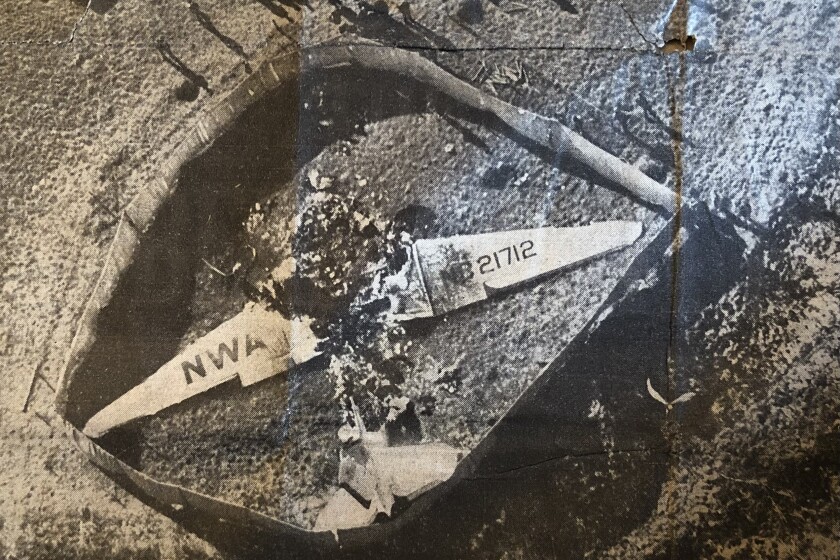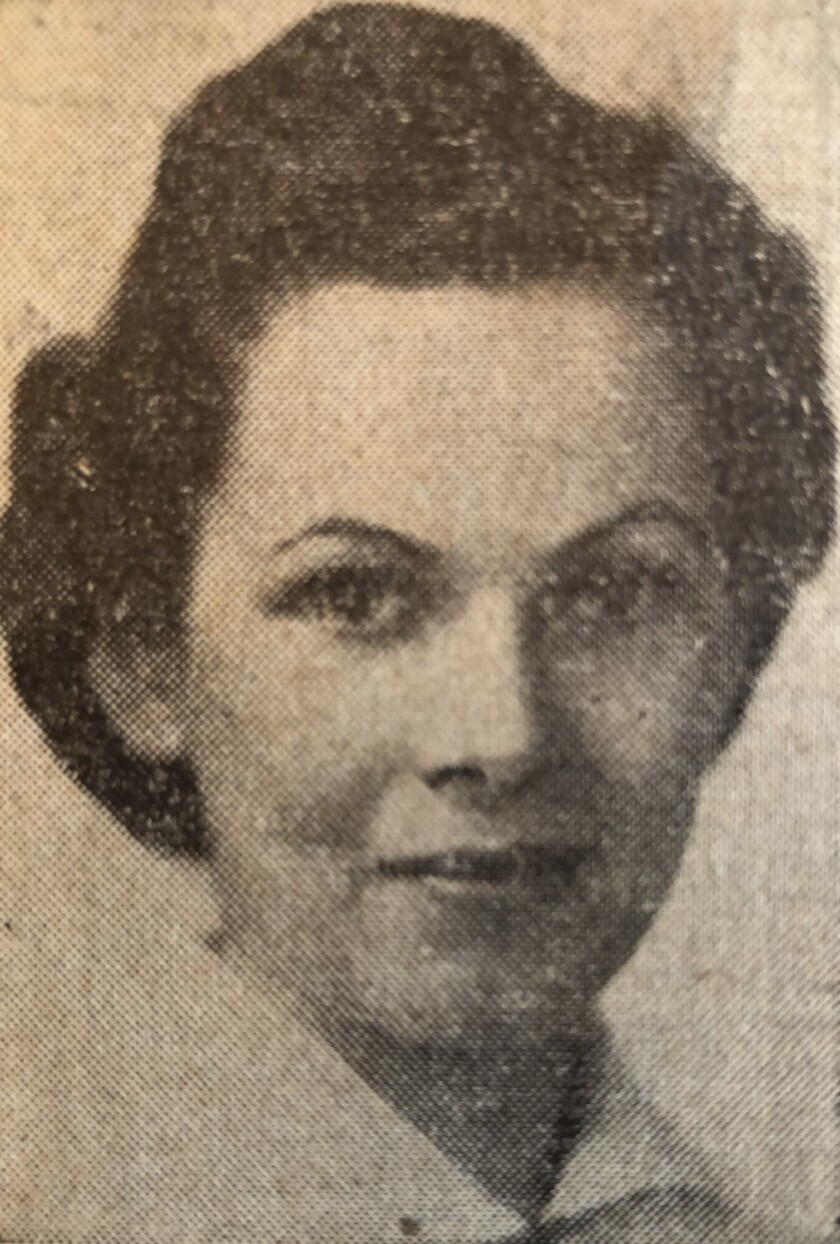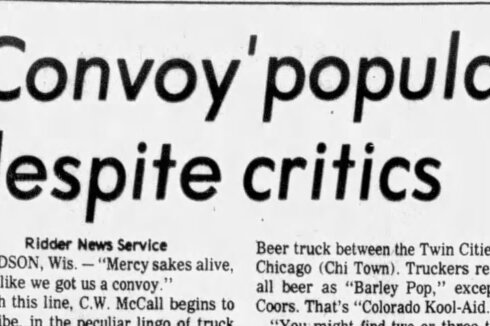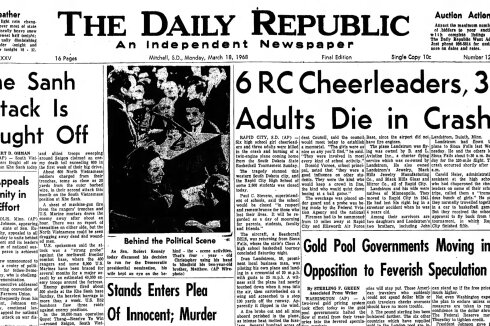Editor's note: This archival Vault article was first published Oct. 30, 2022.
MOORHEAD, Minn. — The residents of Fargo-Moorhead had probably not even had their first sip of coffee that Thursday morning Oct. 30, 1941, when they picked up a special edition of The Fargo Forum the newsboy had dropped at their doorstep.
ADVERTISEMENT
The giant all-caps headline shouted “14 KILLED IN FIERY CRASH OF NORTHWEST AIRLINER HERE.”
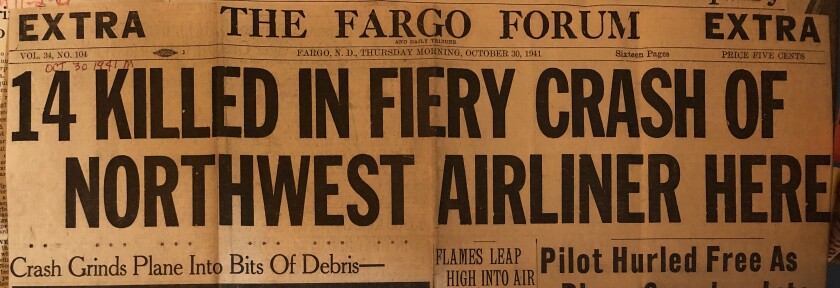
It was shocking news, of course, made all the more shocking when they realized by the end of the day, not only was this the worst aviation disaster in Minnesota history at the time, but with another crash in Ontario that same day, October 30 had become the deadliest day in the history of commercial aviation up to that point.
'I knew something was the matter'
Northwest Airlines Flight 5 was a regularly scheduled, multiple-stop flight from Chicago to Seattle. It had intermediate stops at Minneapolis, Fargo, Billings and Butte, Montana; and Spokane, Washington. Its passenger list read like a “Who’s Who.”
“Flying in 1941 was still an expensive alternative to rail travel,” said Clay County archivist Mark Peihl. “Flight 5’s 12 passengers reflected this. All but two were business travelers.”
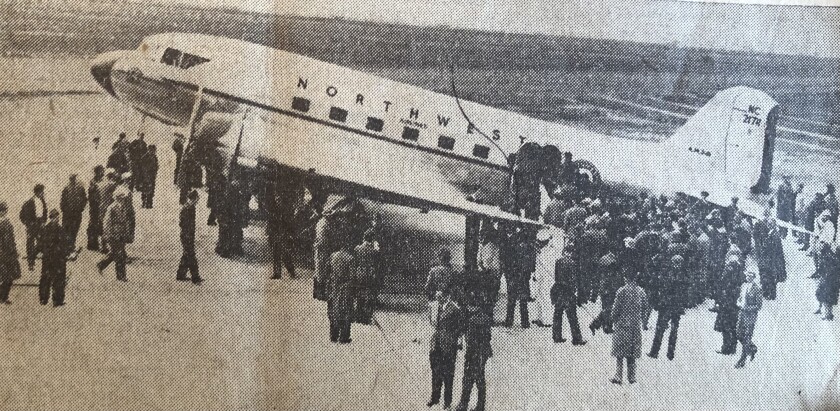
It carried three company presidents, three sales managers, two prominent business owners, an attorney and the state chairman of a political party. (See the full list of the victims below).
The pilot of the plane was 41-year-old Clarence Bates, who had logged more than 7,000 air hours. He reported no issues with the Douglas DC-3A-269, until Barnesville, when he started to notice some light ice forming on the wings, but he said later, not enough to worry about.
ADVERTISEMENT
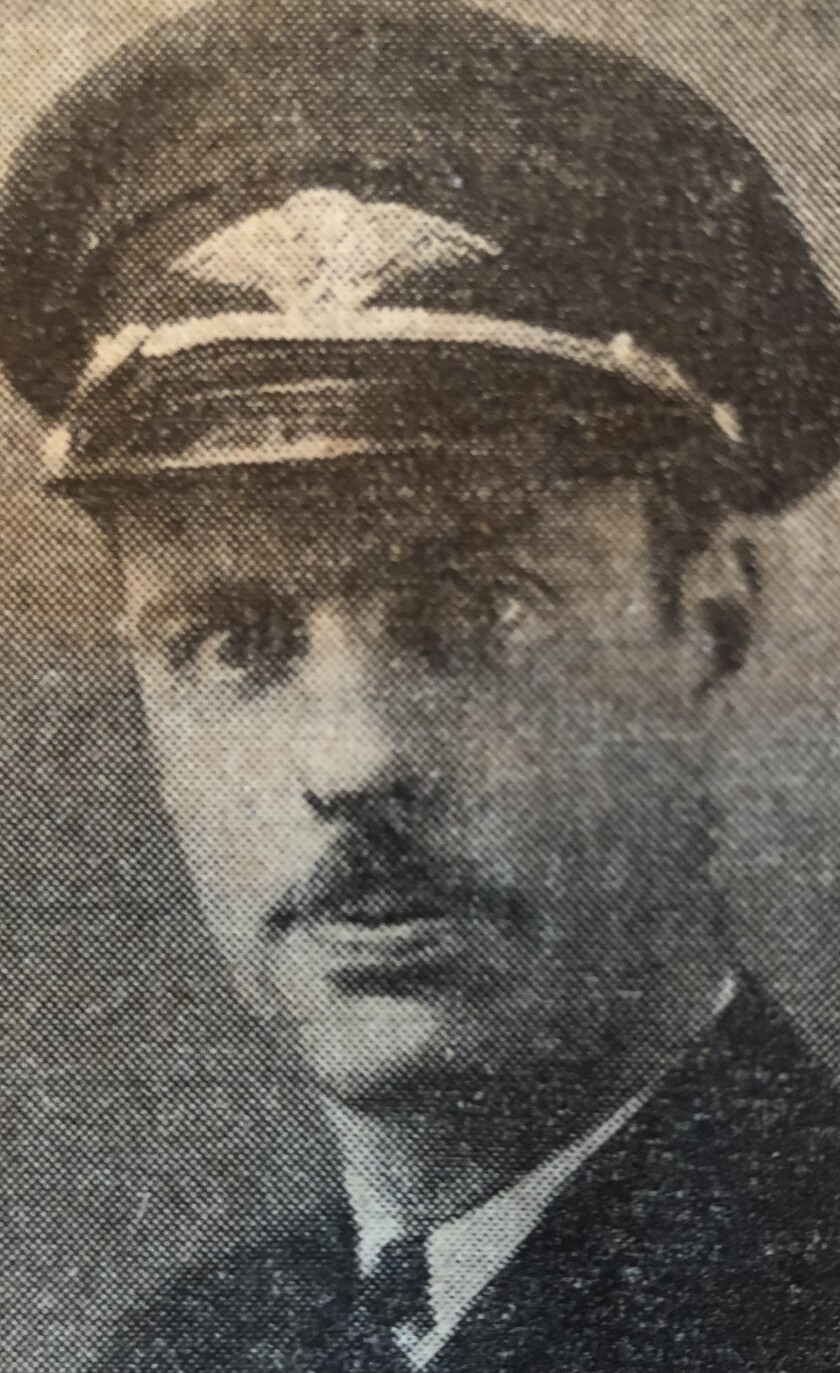
According to reports, the plane was making a routine instrument approach to the Fargo airport around 1:54 a.m when Bates passed over Hector Field at 600 feet to see if he could break through the clouds.
He circled back over the Red River into Minnesota in preparation for the landing. Later he said, “this is when the plane started to act peculiarly and I knew something was the matter.”
The airport never heard from the plane again.
With the airport now out of touch, reports of what happened fell upon witnesses who were in the area in those early morning hours. They watched in shock as Flight 5 crashed on the grounds of the Moorhead Rod and Gun Club, one-and-a-half miles north of Moorhead at 2 a.m.

Reporters interviewed several people who were first on the scene of the crash. The Fargo Forum printed their accounts verbatim. The following audio clips are the actual words of the witnesses read by current Forum Communications journalists.
'Get them out!'
The first witness on the scene was E.M. Gregory, an official with the Great Northern Railroad who tells the harrowing story of finding the dazed pilot, who had been ejected through the windshield upon impact. He had been thrown 250 feet from the plane. Bloodied and injured, Bates was trying to make it back to the plane to rescue his passengers and the rest of his crew.

Turning off into the road leading into the Moorhead Rod and Gun Club grounds, I ran the car as far as I could then jumped out and ran toward the burning plane. I was delayed for a moment by falling into the water in the Coulee, scrambled up the other bank and saw the pilot, Mr. Bates, just getting up from the ground about 15 feet in front of the nose of the plane. He was frantic and was screaming 'Get them out!'
Listen to E.M. Gregory's full account of the crash
ADVERTISEMENT
'His only concern was for his passengers'
The couple Gregory mentioned running into was Eveline Berg, a “Fargo beauty operator” and her companion Charles Bailly of Columbus, Ohio. The two had been out at a nightclub when they heard a commotion on the outskirts of town. They got in the car to see what was going on.

Charlie and the other man tried to drag him away from the wreckage. But he kept saying 'Go back into the plane! Get people away from the wings! They're full of gas!’ His only concern was for his passengers. We were able to lay the pilot down on that other man's coat. But he kept trying to get back on his feet to go back to the plane. But he was finally so exhausted. He lay back down I was able to hold his head in my hands to help ease his pain. He was bleeding a lot.
Listen to Eveline Berg's full account of helping the pilot after the crash:
Bogged down in the mud
Help arrived in the form of Ralph Yoder, an ambulance driver who was called to bring Bates to the hospital. The weather conditions and terrain made it difficult to get the upset and incoherent Bates to the hospital.

The mud was so deep that the six firemen bearing the stretcher had bogged down in the mud and Wesley Pearson, my assistant and I had to get into the Coulee bottom and give them a lift. We passed the stretcher forward and then firemen on the far side helped firemen who were mired in the mud to get free.
Listen to Ralph Yoder's full account of rescuing Captain Bates:
'It’s just one of those things'
As Yoder said, one of Bates’ requests was that someone calls his wife, Virginia, back in Minneapolis to tell her he was okay. She relived the night with a reporter the next day while visiting her husband in the hospital. As the paper said, in true pilot wife form, she seemed "unruffled."
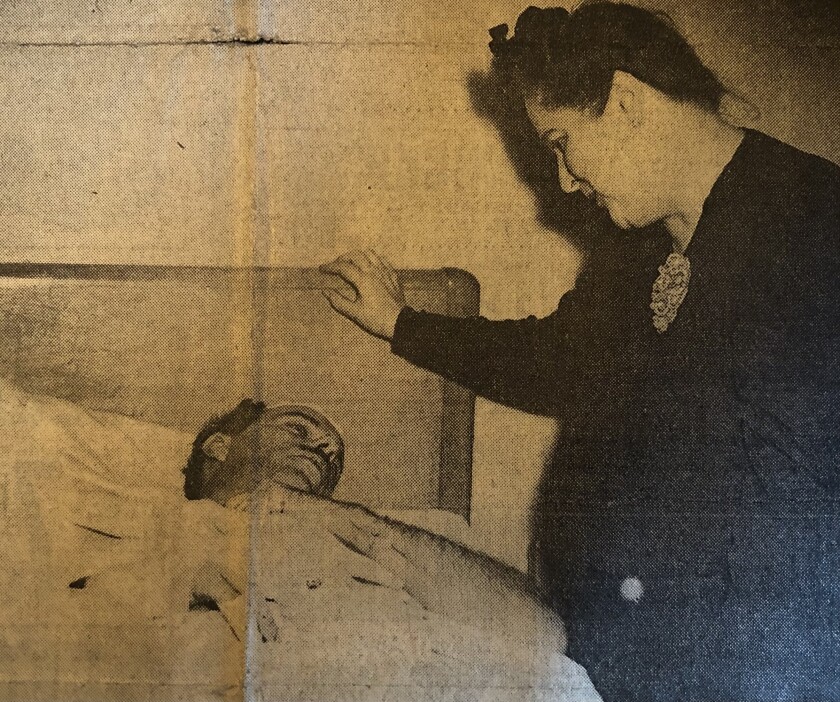
It was about four in the morning, and I thought Clarence was calling to say bad weather had grounded the plane and that he would be late returning to Minneapolis. A friend called first and then the hospital. I got ready to come to Fargo right away.
Listen to Virginia Bates full account of her husband's plane crash:
'Everything went haywire'
Of course, the person everyone wanted to hear from was Bates. When he had been brought to the hospital, he was unaware that everyone on the plane, except him, had been killed. They broke the news to the devastated pilot the next day.
ADVERTISEMENT
Considering what he had gone through, his injuries were fairly minor. He had cuts to his head and arm, cracked vertebrae, and damage to his right hand and arm.
Authorities wasted no time talking to him about the crash, questioning him beside his bed at St. John’s Hospital. His account of the night is terrifying - feeling unable to do anything, while the plane he knew so well seemed to be unresponsive to his every move.

The ice was piling up and the airplane answered very slowly to the controls. But then everything went haywire. I couldn't control it at all, nothing worked. Nothing answered. I might just as well have not been there as far as the way the thing acted for the next few seconds. And it wasn't very long. It was hardly enough time for me to realize I was going to crash.
Listen to Clarence Bates full account of the moments before the crash here:
Bates was released from the hospital a week later. After the inquiry, Bates was ruled not to be at fault for the crash. His survival proved to be a blessing for authorities working to make air travel safer. Pilots don’t often survive crashes like this one. So his report of the final moments of the flight helped pinpoint what went wrong and how it could be prevented in the future.

The investigators ruled that the cause of the crash was not just the ice build-up on the wings, but the inability of the plane to respond with full-power. Also at fault, they said, was the failure of the Northwest dispatcher “to recognize the seriousness of weather conditions in Fargo,” and offer Bates an alternative landing site.
Meteorologist Daryl Ritchison, director of the North Dakota Agricultural Weather Network, said given that it was 1941 and with weather information available at the time, the pilot would have likely been easily caught off guard.
"The temperature dropped from just above freezing to below freezing from midnight to 2 a.m. just before the crash," Ritchison said, "Also, light fog developed during that time frame and mist/drizzle was reported just before and during the crash period. All would attribute to icing as the plane was moving into lower altitude."
Sadly, Bates would not be so lucky next time. Almost a year to the date of the Moorhead crash, on Oct. 31, 1942, (with World War II now underway) Bates was killed when the B-24 bomber he was test-flying crashed in St. Paul.
ADVERTISEMENT
Victims of Northwest Flight 5 crash in Moorhead
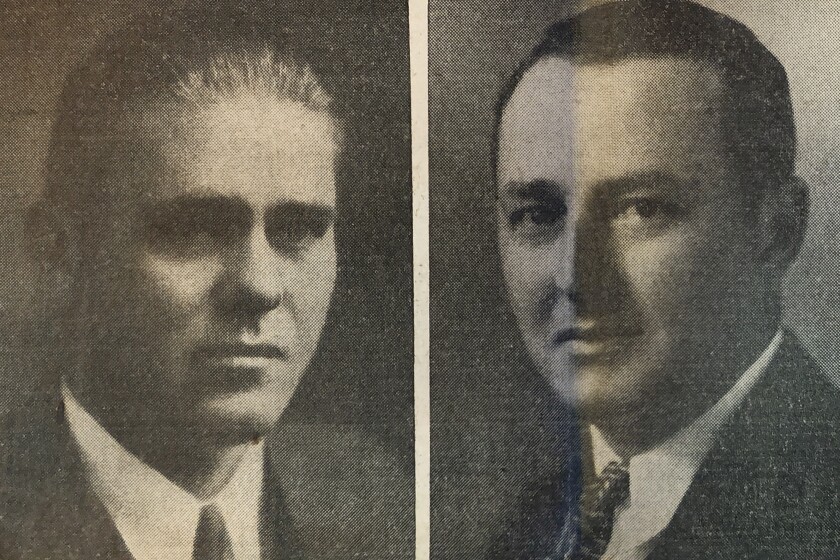
- Emory A. King, 45, Fargo, president of the Dakota Tractor Company
- Ned Wells, Fargo, 41, sales manager of the Dakota Tractor Company
- A. F. Simonson, 42, of Grand Forks, owner of several businesses
- Helen Ford, of Fargo and Minneapolis
- Clarke W. Farup, 45, of Grafton, North Dakota, owner of Ford auto agencies
- Caroline Packard, 50, of Atlantic City, New Jersey, on her way to visit her sister in Seattle
- Henry G. Klopp, 68, of Spokane, Washington, president of the White Pine Sash Company, on his way to see his critically ill wife after attending his mother’s funeral in Indiana
- Lynn C. Carr, 34, of Highland Park, Illinois, traffic representative for Northwest Airlines
- W. A. Metzger, age unavailable, of New York City, sales manager for Royal Typewriter Company
- A. H. Brown, 60, of Billings, Montana, attorney and chairman of Montana State Republican Central Committee
- Fred R. Lowell, 38, of Springfield, Ohio, sales manager for the National Supply Company
- R. W. Ramsey, age unavailable, of North Canton, Ohio, president of Ramsey Lumber Company
- Co-pilot, Alden Onsgard, 25, Minneapolis
- Flight attendant Bernice Blowers, 25, Welcome, Minnesota
Other interesting facts about the Northwest Airlines crash in Moorhead
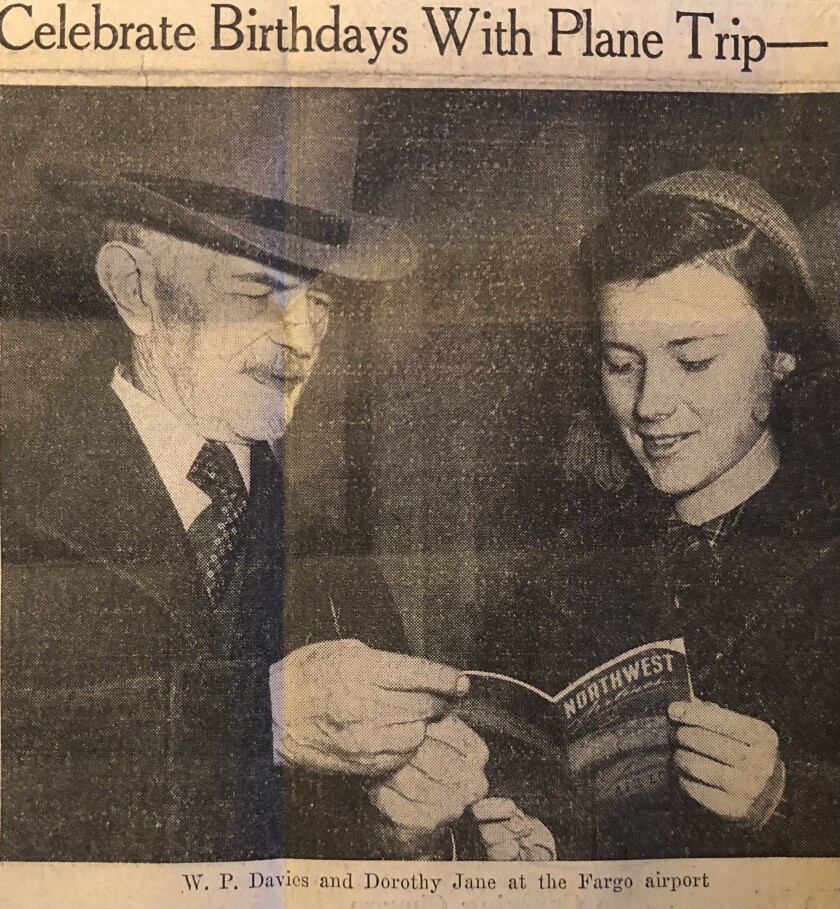
- The crash was the deadliest in the state's history up to that point. The current most deadliest aviation disaster in the state occurred in 1993, when Northwest Flight 5719 crashed in Hibbing, killing 18 people.
- Flight attendant Bernice Blowers was engaged to be married. Her fiance’ told authorities he asked Bernice to get a substitute for the flight so she could go dancing with him. But she felt it was her duty to fly. Both her engagement ring and wings were found in the wreckage.

Bernice Blowers was the only flight attendant on the plane. She had just gotten engaged to be married. Forum archives - Co-pilot Alden Onsgard left dentistry school to be a pilot because he said “there is no excitement in pulling teeth.”
- The plane carried more than 750 pounds of mail destined for Fargo, Montana and Washington. About 100 pounds were recovered from the wreckage and taken to the Fargo Post Office, where clerks salvaged 898 pieces - readable but with marks from the fire.
- Page 12 of The Fargo Forum on Nov. 2, 1941 was a lesson in contrast. Stories toward the top of the page include details of the investigation into the Moorhead crash as well as information about a very similar crash in Ontario on Oct. 30 which killed 20. But at the bottom of the page is a photo of a grandfather giving his granddaughter a plane ticket for her birthday with the headline, “Celebrate Birthdays With Plane Trip.”
Editor's note: Due to an editing error, an earlier version of the headline for this article incorrectly labeled this crash as the worst in Minnesota's history, when in fact it was the worst up to that point in history. Additionally, the deadliest aviation crash in Minnesota's history is currently the 1993 Northwest Flight 5719 crash in Hibbing, which killed18 people.

